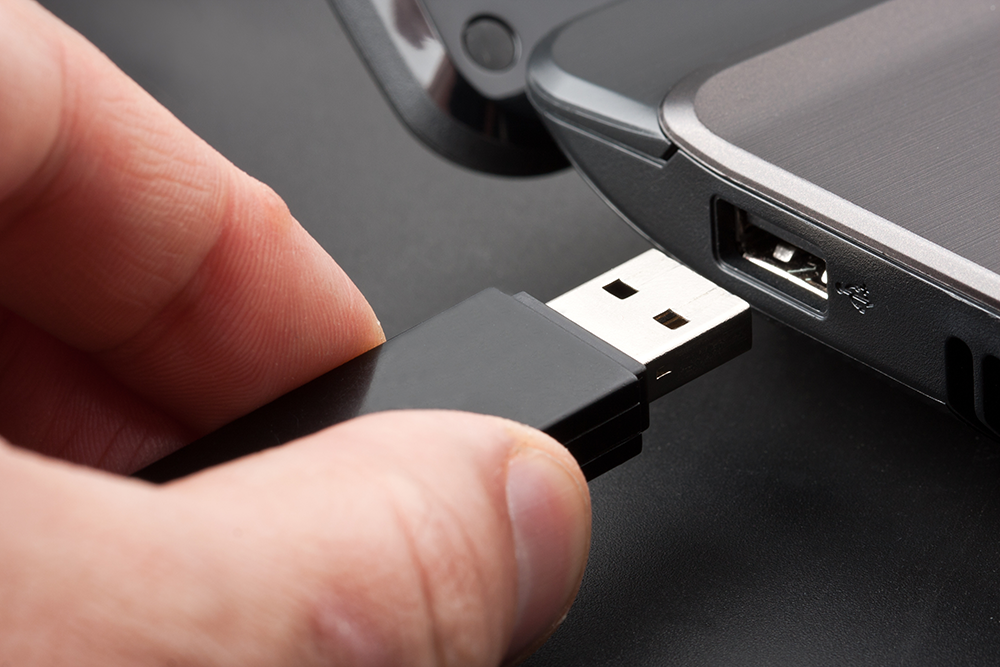What is Keyboard Wedge Functionality & How is it Used with RFID Technology?

What is Keyboard Wedge Functionality and How Does it Apply to Me?
Keyboard wedge functionality isn’t an RFID-specific term, but instead is used to describe the functionality of a software or hardware device that interfaces in a specific way with a computer. The key to understanding Keyboard Wedge functionality is in the word “keyboard”. Other names for keyboard wedge functionality include:
- Keyboard Emulation Device
- Human Interface Device (HID) (broader definition that includes most all USB connected computer devices, i.e. USB mice, USB keyboards, etc.)
One of the best definitions of keyboard wedge is from NinjaOne, and reads:
Keyboard Wedge Functionality A keyboard wedge is a hardware device, or more commonly, a software program that translates digital signals from an input device into keystrokes that a computer can understand. It is called a ‘wedge’ because it typically ‘sits’ between the computer and the input device, acting as a translator or interpreter.
How Does Keyboard Wedge Functionality Work?
At the most basic level, keyboard wedge devices or HID devices work by capturing data and converting that data into electrical signals. The device then converts these electrical signals into keystrokes, based on instructions from a software component. The computer receives the keystrokes exactly how it receives keystrokes from a keyboard, and outputs the data in numeric and alpha-numeric strings in an open-text field program, i.e. any active text field that the user selects (documents, spreadsheets, emails, etc).
Keyboard Wedge Hardware Devices
Keyboard wedge functionality can be purchased strictly as software or preconfigured onto a hardware device directly. In this article, we are going to focus on hardware devices with keyboard wedge functionality – mainly RFID devices.
Hardware devices that have keyboard wedge functionality typically connect to a computer the same way a keyboard does – through a USB connection or, less commonly, from a PS/2 port or RS-232 cable.

USB Port (left), RS-232 Port (middle), PS/2 Port (right)
In terms of RFID technology, this would typically be USB RFID Readers.
*Of note: Some fixed RFID readers, when combined with a keyboard wedge-enabled software, can have keyboard wedge functionality. Examples are included below in “Which RFID Readers have Keyboard Wedge Functionality”.
There are quite a few different USB RFID Readers, but only a select few have keyboard wedge functionality.
What can you do with RFID Hardware that has Keyboard Wedge Functionality?
Keyboard wedge functionality in USB RFID readers provides an uncomplicated way to receive tag read data, without additional software.
The steps are pretty simple when using this functionality:
- Open any free text field program (Word, Notes, etc.).
- Plug in your keyboard wedge-enabled USB RFID Reader.
- Hit a pre-determined key to start or stop the data flow, or simply bring RFID tags within the range of the reader.
When using a fixed RFID reader with keyboard wedge functionality in the connected software, there will likely be more steps, unique to the specific reader and software.
Here’s a video on reading UHF RFID tags with the ThingMagic Elara – a Keyboard Wedge enabled RFID reader.
As you can see from the video, keyboard wedge functionality makes an RFID reader a true plug-and-play device.
Which RFID Readers have Keyboard Wedge Functionality?
Here are some of the top RFID readers on the market that can be used as an HID or keyboard emulation device.
- ThingMagic Elara USB RFID Reader
- CAEN RFID Tile Compact UHF RFID Desktop Reader
- Identix mPad+ or rPad + MX UHF RAIN RFID Readers
- ThingMagic Sargas UHF RFID Reader (with RAINstream software)
- ThingMagic Izar UHF RFID Reader (with RAINstream software)
- Impinj R420 UHF RFID Reader (with Speedway Connect Software)
- Impinj R220 UHF RFID Reader (with Speedway Connect Software)
- Zebra FX7500 UHF RFID Reader (with FX Connect software)
- Zebra FX9600 UHF RFID Reader (with FX Connect software)
Conclusion
Thanks so much for reading our article about Keyboard Wedge Functionality and RFID Hardware. For more information on all things RFID, contact us anytime!

